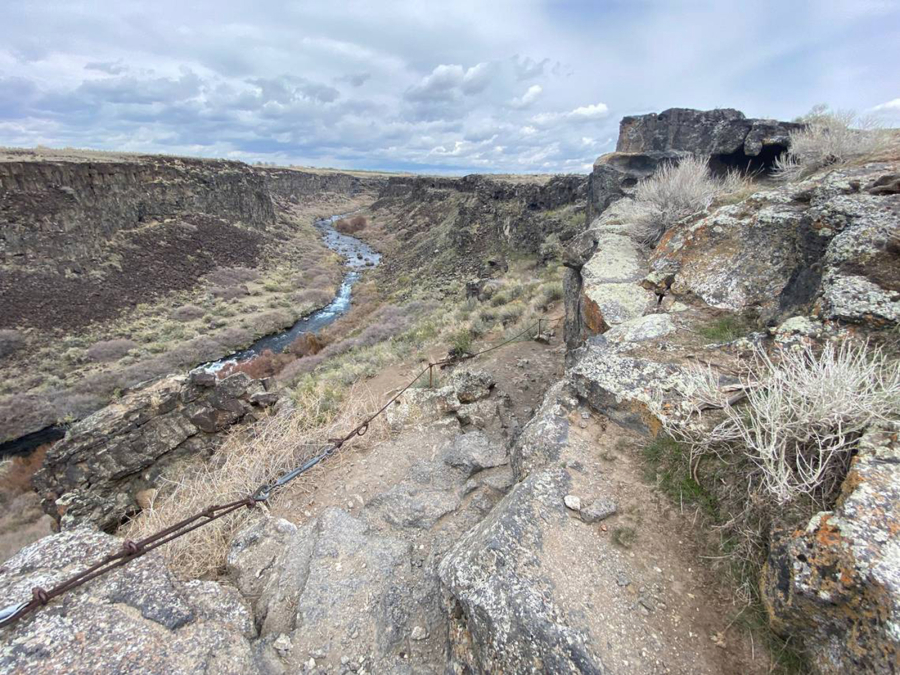BOISE, Idaho — Idaho is known for all kinds of natural wonders — mountains, canyons, waterfalls, unique rock formations. But tropical waters? One increasingly popular Southern Idaho trail follows a basalt canyon rim before taking hikers down into the canyon itself to walk along bright blue-green water reminiscent of the Caribbean Sea.
The Box Canyon Springs Trail is in the Earl M. Hardy Box Canyon Springs Nature Preserve, part of Idaho’s Thousand Springs State Park. The preserve is about 115 miles east of Boise near Hagerman, Wendell and Buhl.
Thanks to its beauty, Idaho’s booming population and recent developments near the trail, visitation nearly tripled between 2019 and 2020, the Idaho Department of Parks and Recreation reported. It makes a perfect trip in combination with visits to Thousand Springs’ other park units or a paddle to Blue Heart Springs, a nearby cove off the Snake River that is accessible only by boat and boasts even more clear, turquoise waters.
The Box Canyon Springs Preserve is a relatively new addition to the Idaho Department of Parks and Recreation’s properties. The Nature Conservancy, which purchased the property in 1999, completed its transfer of the preserve to the state in 2016. Juelie Traska, park ranger at Thousand Springs State Park, said the spring’s water supply comes from the Snake River Plain Aquifer, originating from water sources including the Big and Little Lost rivers.
“When (the water) comes out, it comes up underground from the springs or through the canyon walls,” Traska said in a phone interview. “When it travels underground, it filters itself through all the basalt rock.”
Traska said the process purifies the water and adds minerals, leaving the water a pristine color unlike other water sources in the area.
“When you look at it compared to the Snake River … it’s really blue where the Snake River’s kind of greenish,” she said.
Traska said the increase in visits was likely due in part to parking and road upgrades. Previously, the site had only a small parking area off of West Point Road. Visitors had to follow a rough dirt road the last half-mile to the canyon. Recently, the department paved that road and added a larger parking lot just steps from the canyon. A paved sidewalk brings visitors to an overlook with views of two of the largest, brightest pools in the preserve, making the attraction accessible to a much larger audience.
The 3.5-mile hike starts just past the paved overlook. Hikers must climb a small stair bridge to cross a barbed-wire fence before starting on the trek. The next half-mile follows the rim of the basalt canyon, where you can see the springs running 200 feet below and watch birds of prey circling above. There are plenty of places to stop and take in the view, but watch your step — there are loose rocks strewn across the path, and rattlesnakes frequent the area when the weather warms.
The descent into the canyon can be tricky at times. A cable railing follows the trail as it winds 200 feet down to the canyon floor. Along the way, expect to pick your way through large rocks, side-step down steep grades and push past overgrown foliage.
At the bottom of the canyon, the trail levels out and meanders near the springs, offering glimpses of the rushing water, which flows out to meet the Snake River.



